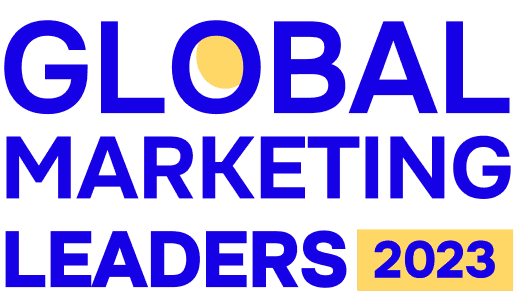Sneha Beriwal
Global CMO at Vahdam
Shaping Tomorrow's Marketing: The Potential of AI and Ideal Content With Sneha Beriwal
In the ever-evolving landscape of marketing, two powerful forces have been shaping the way brands connect with their audiences: artificial intelligence (AI) and the pursuit of ideal content. As these two trends converge, a new frontier of possibilities emerges, promising to redefine the way marketing strategies are formulated, executed, and refined.
As technology continues to evolve and AI becomes an increasingly integral part of our digital toolkit, marketers find themselves at the threshold of a paradigm shift that could redefine the very essence of their craft.
Join Prateek Kalra, Associate Director of Sales, Pepper Content, and Sneha Beriwal, Global CMO At Vahdam, as they discuss all this and more
Here are some excerpts.
1. Tell us about your journey so far.
My journey in the world of marketing has spanned quite a long and diverse path. Throughout most of my professional life, I've been immersed in the realm of marketing, particularly in the arena of consumer products. I've had the privilege of working with renowned brands like Nestle and handling the marketing function for Dabur in Europe for around five years.
A pivotal phase of my journey was spent at the Aditya Birla Group, during which I ventured beyond the confines of consumer packaged goods (CPG) and delved into various other industries. This period exposed me to a range of experiences, from working with the retail brand Pantaloons to delving into the intricacies of health insurance, a sector within the financial services domain.
After this enriching journey across diverse sectors, I find myself back in the CPG space as a part of Vahdam India, a prominent Indian global tea brand. At Vahdam, our focus is on delivering premium teas in their freshest form to a global audience. With a footprint spanning 230 countries and a presence on numerous Amazon marketplaces worldwide, we take immense pride in our achievements. Our brand has even earned the endorsements of notable figures such as Oprah Winfrey and Karan Johar. This encapsulates my professional voyage in a nutshell, and I'm excited to continue this journey of growth and innovation.
2. How have the challenges for marketers evolved in the last decade?
Looking back at the past decade, it may seem that things were simpler in the earlier days of marketing, but in reality, they were not. The high cost of failure was a significant factor back then. Brands would invest heavily in big production films and television advertisements, often relying on a single 360-degree campaign. If that campaign didn't yield the desired results, it could be a substantial setback. Today, however, the landscape has changed.
The ability to conduct small experiments and pilots has become more feasible, allowing us to allocate resources to what we believe is already working. The instant feedback loop has transformed how we approach marketing. The pace of testing and refining strategies has accelerated, providing us with real-time insights into what resonates with our audience.
In the past, marketers and advertisers were the driving force behind content narratives. Brands presented their point of view, hoping it would connect with a wide audience and foster brand attachment. However, the rapid feedback loop we experience today has shifted this dynamic.
Consumers now play a significant role in shaping brand narratives. Their immediate responses influence the direction brands take.
While this responsiveness has its benefits, it has somewhat diminished the brand's ability to lead and drive societal changes through its narratives. Nonetheless, I'm optimistic that this will change. As audiences grow tired of repetitive content, the opportunity for brands to introduce fresh perspectives and narratives will reemerge, recapturing their attention and engagement.
Ultimately, the challenges for marketers have evolved, but I don't perceive today's landscape as being more challenging than before. Both eras had their unique obstacles that demanded creative solutions and strategic adaptability.
3. What are the major areas in which you as a leader are investing your time, effort, and money?
As a leader in a relatively young brand, I'm deeply involved in shaping our content strategy and investment priorities. Our journey in the consumer packaged goods (CPG) industry has placed us amid an ongoing evolution, particularly when it comes to content. We've made strides in identifying platforms that work well for our direct-to-consumer (D2C) presence and customer retention strategies. However, the challenge of scaling content while maintaining authenticity remains a prominent focus of our efforts.
Navigating the complex landscape of content scalability is crucial for us. With a global presence spanning 130 countries, various Amazon platforms, our websites, and offline channels, the diversity of content needs is substantial.
Striking the right balance between structure and authenticity is a key endeavor. We're continuously experimenting to find the optimal approach that resonates with our diverse consumer base.
Scaling content involves a blend of manual processes and tech solutions, and while we're actively exploring potential tech stacks, we acknowledge that it's a nuanced challenge.
In addition to content scaling, we're investing resources into consumer intelligence tools. The challenge of effectively communicating with our global customer base necessitates understanding their sentiments and preferences. We've delved into sentiment analysis, social listening, and other pre-content strategies to glean insights before diving into content creation. Despite the ongoing quest for scalable solutions, we recognize that some aspects of content creation will likely remain a manual process, given the dynamic nature of our business growth.
4. How do you define ideal content?
From my perspective, defining ideal content in today's landscape is a multi-faceted challenge. While many business leaders emphasize delivering content that resonates and yields immediate results, I lean towards a more traditional approach. While giving customers what they want is undoubtedly important for short-term gains, I believe that merely meeting present needs might not ensure lasting relevance.
I advocate for a balanced strategy that combines addressing current demands with forward-thinking content that establishes a brand's role in customers' lives.
In essence, ideal content should serve both short-term and long-term objectives. Achieving this equilibrium is no easy feat, as it requires navigating the complexities of capturing attention today while leaving a memorable impact for tomorrow. Purpose-driven marketing, even in today's performance-driven landscape, remains significant.
Brands that successfully intertwine immediate value with a lasting narrative hold immense value. Striking this balance is a true art, and those who master it are indeed invaluable assets to any business. Ultimately, defining ideal content should encompass satisfying immediate needs while also securing a lasting place in the hearts and minds of consumers.
5. How do you perceive AI's influence on content strategies? Can it truly shape the future of marketing or is it an assistive tool rather than a game-changer?
I hold a strong belief in the transformative power of emerging technologies, and embracing them is essential for staying relevant in today's rapidly changing landscape. Regarding AI's influence on content strategies, I consider it a promising tool that is still in its early stages. While many of us are exploring its potential and experimenting with its applications, AI's impact on content strategy is not yet a significant part of our overall approach. The necessary guidelines and frameworks to leverage AI effectively in content strategy are still evolving, and I see this technology evolving considerably over time.
From my current perspective, AI has the potential to alleviate the more routine and operational aspects of content creation, which could offer marketers the luxury of more thinking time. This shift from doing to strategizing is crucial, especially in a field where the constant churn of content often leaves little room for deep reflection and ideation.
While the excitement surrounding AI is palpable, its current utilization seems to be more about increasing output rather than truly reshaping the content landscape. As AI matures and its capabilities are refined, I anticipate it will gradually shift from merely amplifying output to genuinely enhancing content strategy by freeing up mental space for more nuanced, creative, and strategic thinking. However, we are still in the nascent stages of this transformation, and it remains to be seen how it will unfold.
6. What would your ideal marketing stack look like?
When envisioning my ideal marketing stack, a few key aspects stand out. First and foremost, achieving standardization across various content touchpoints is crucial. It would be immensely valuable to have a tool that can assess the consistency and coherence of content across different channels, providing a match score that indicates how well they align. This would help in ensuring a unified brand identity and messaging strategy.
Secondly, real-time feedback holds immense potential. Rather than waiting for post-campaign analysis, having a tool that can predict outcomes based on historical data and customer profiles would be a game-changer. Pre-rollout testing with projected performance metrics, such as anticipated click-through rates or revenue from emails or ads, would provide valuable insights and aid in decision-making before launching campaigns.
Lastly, investing in a robust training and learning platform for content marketers is essential. The ever-evolving landscape of marketing tools can be overwhelming, especially for newer team members. A consolidated training resource that guides them through relevant tools and techniques would not only enhance their skills but also contribute to the overall quality of the team's output. In essence, my ideal marketing stack would encompass these elements to foster standardization, predictive insights, and continuous learning.

